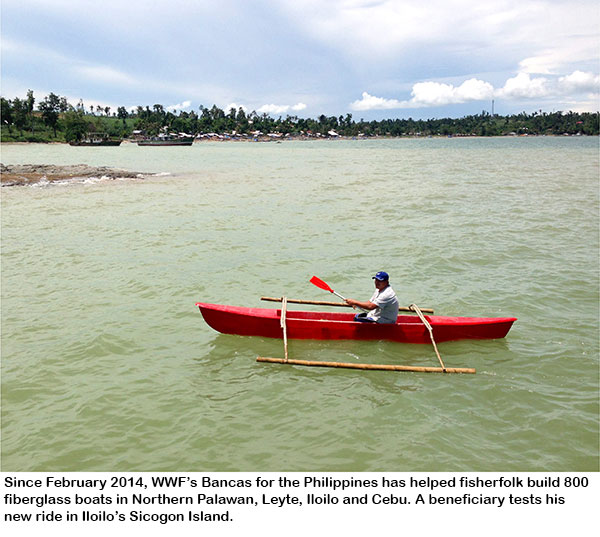New fiberglass bancas allow Palawan pescadors to return to sea
MANILA, Philippines - “My father has always been a pescador, our term for fishermen,” says Cocoy Garcia, a 38-year old fisher, as we strolled around his stilt village in Culion, Northern Palawan. “I was nine when he first took me out. We caught baskets of squid that first night, lured in by the glow of our petromax lamp.”
Together, Cocoy and his father fished for decades. The old pescador taught his son the age-old skills of the sea – how to read the tide, mend nets, overhaul engines, repair boats, where to find the biggest fish.
“One day, my father and his crew were caught by a sudden storm,” explains Cocoy. “Waves as tall as trees pounded and finally overturned their boat. Luckily, they were able to swim ashore, but it was weeks before what remained of their banca was found, miles and miles away. That was the last time my father fished.”
Fearing the sea, Cocoy’s father took to the mountains to become a farmer. A year ago, Cocoy almost did too. On Nov. 8, 2013, Typhoon Yolanda, history’s most powerful storm, ripped through Northern Palawan. Coastal communities like Cocoy’s barangay Osmeña were hardest hit. Across the country, 30,000 bancas were destroyed, depriving 146,700 small-scale fishers of their main sources of food and livelihood. The typhoon left Cocoy’s village in shambles – but help came in the form of a Panda.
Immediately after Typhoon Yolanda, the World Wide Fund for Nature (WWF) spearheaded a program to restore food security and establish resilience in coastal communities that are vulnerable to climate change impacts. Bancas for the Philippines (BFP) taught fisherfolk like Cocoy to build new fiberglass bancas, which are stronger and lighter than traditional wooden boats.
The fiberglass boats measure 15 feet and weigh about 30 kilograms. While a traditional wooden boat takes from 10 to 20 days to build, a fiberglass banca takes only one or two days. Fiberglass bancas also last at least 20 years, compared to wooden boats which can only withstand a maximum of 10 years of weathering.
Cocoy is now an expert at building boats. Through the help of WWF, he has built 58 fiberglass bancas, allowing many people in Palawan to fish again. Since its launch in February 2014, Bancas for the Philippines has helped fishers build 800 fiberglass boats in Northern Palawan, Leyte, Iloilo and Cebu.
A year after the nightmare of Typhoon Yolanda, Cocoy has returned to sea. “There aren’t as many fish as before the storm hit, but I can still catch up to 12 kilograms daily. WWF has really helped me and my family. Without our new fiberglass bancas, I would still be afraid of the sea. Now I’m a pescador again – and I want to pass on to my children what my father taught me.”
- Latest

























